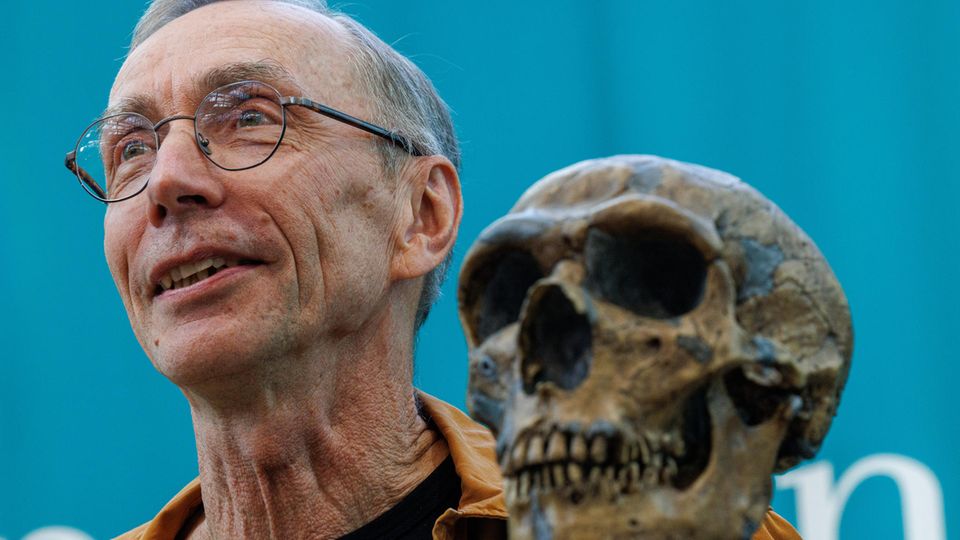Homo naledi
Researchers find world’s oldest burial site – discovery could change our understanding of evolution
The brain of homo naledi was significantly smaller than that of modern humans. But the world in which he lived seems to have been more complex than previously thought.
© Imago/Xinhua
The brains of the extinct Homo naledi were three times smaller than those of modern humans. Nevertheless, they are said to have had more complex behaviors than previously assumed.
Homo naledi was just under 1.50 meters tall and had a brain the size of an orange – but its behavior is said to have been more similar to that of Neanderthals and Homo sapiens than previously thought. This is the result of studies by scientists in South Africa.
The first remains of Homo naledi were discovered during excavations in 2013 in a cave system in South Africa. The Rising Star cave system is a UNESCO World Heritage Site and includes an area where researchers have found remains of several ancient human ancestors.
Symbols carved into cave walls are older than expected
Now the anthropologists have discovered the remains of Homo naledi, which were buried in a fetal position in cave depressions and covered with earth. This suggests that burial rites are at least 100,000 years older than all previously known burials of Homo sapiens.
The scientists also found symbols carved into the cave walls, which are believed to be 241,000 to 335,000 years old. Similar symbols found in other caves were carved by early Homo sapiens 80,000 years ago and Neanderthals 60,000 years ago, and are thought to have served to convey information.
Caves, tunnels and caverns
Subterranea: Insights into the mysterious world under the earth
Symbolic practices may not have been invented by Homo sapiens
“These new findings suggest that Homo naledi consciously engaged in burials, symbols, and meaningful activities,” says paleoanthropologist Dr. Lee Berger. For him it was clear that Homo Naledi “exercised complex practices in connection with death”. “That would mean not only that humans are not unique in using symbolic practices, but that they may not even have invented such behaviors,” Berger said.
The scientists believe that the symbols carved into the cave walls are from Homo naledi and not Homo sapiens. After all, there is no evidence that people have ever been in the caves.
New discoveries could overturn previous evolutionary theories
The meaning of the symbols is unclear, and researchers can’t say if they were used as a form of language or communication within the species. “What we can say is that these are intentional geometric patterns that had meaning for Homo naledi,” says scientist Agustín Fuentes. “They put a lot of time and effort and risked their lives carving these things where they buried their bodies.”

The discoveries by scientists in South Africa suggest that larger brains cannot be the only link to complex behavior, Fuentes said. “We now know that Homo naledi – along with Homo sapiens, Neanderthals, Denisovans, and a few others – exhibited behavior that just a few decades ago we thought was unique to us,” says Fuentes. “This means we need to reconsider the timing of fire use, meaning making, and burial of the dead in hominin history.”
Sources:CNN, National Geographic


